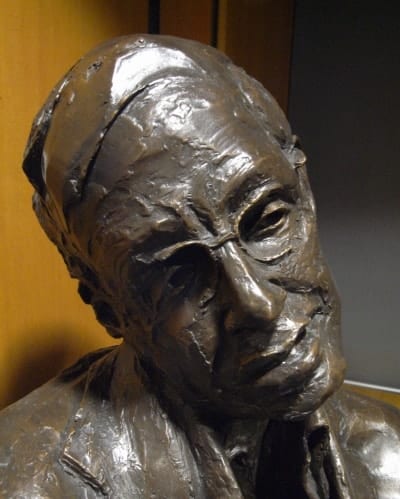
The Centre for Theoretical Cosmology, an “international hub” that will draw together cosmologists young and old to answer the big questions of the universe, was launched at the University of Cambridge in the UK yesterday. The event was marked by the unveiling of a bust of Stephen Hawking, who founded the new centre.
Some of the most fundamental discoveries in physics have been made at Cambridge, including those by Isaac Newton, James-Clerk Maxwell and Paul Dirac. But, speaking at the launch, Hawking said that future discoveries will need a global effort among physicists. “Over the past few decades science has become a worldwide activity,” he said. “Theoretical cosmology optimizes this.”
Hawking went on to summarize what the big remaining questions in cosmology are: “How did the universe begin? What ‘banged-up’ the Big Bang? What of dark matter and dark energy? How were the laws of physics determined? What lies to our future?”
In the past we have collaborated as individuals, but in the future we will be collaborating as centres George Smoot, University of California in Berkeley
The centre, which is based at the existing Centre for Mathematical Sciences, is being funded by the Stephen Hawking Trust Fund. Currently the only dedicated space is a refurbished seminar room where the launch took place, but organizers said they were hoping to have a building to house the centre in the future.
The bust, which was created by the late UK sculptor Ian Walters — famous for his statue of Nelson Mandela in Parliament Square, London — was unveiled by Alison Richard, the vice chancellor of the university. Roughly half a metre tall, it is a contemporary portrayal of Hawking with his characteristically staid expression gazing across the room.
Hawking’s introduction was followed by brief words from three eminent physicists: George Smoot, who shared last year’s Nobel Prize for the discovery of anisotropies in the cosmic microwave background radiation; Franck Wilczek, who shared the 2004 Nobel Prize for discovering asymptotic freedom in the theory of the strong force; and Katsuhiko Sato, previous director of the Research Center for the Early Universe at the University of Tokyo in Japan.
Smoot, who recently launched his own cosmology centre at University of California in Berkeley, US, said: “In the past we have collaborated as individuals, but in the future we will be collaborating as centres.”



